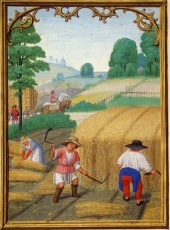
 7
7




Be the shenanigans
you want to see in the world.

 6
6




K Eilander wrote:Okay, so permaculture/food forest is all about the perennials. I totally sympathize with that - I want to plant it and have it keep coming back.
But then again, permaculture philosophy begs the question, "Well, how does nature do it?"
There is obviously a wild scenario wherein annuals come back year after year - otherwise the species would have died off.
So if I plant my annual tomatoes, corn, jalapenos, etc... (and presuming I don't eat all the seeds) why don't I have that same thing growing there next year?
Is the problem really just that they're annuals or is it something more subtle... Non-indigenous species to the area? Historical breeding creating weaker varieties? Other...?
Because if we nail down the "five whys" of the problem's origin, we can then seek out appropriate steps to remedy it, rather than saying a blanket "no annuals".
A build too cool to miss:Mike's GreenhouseA great example:Joseph's Garden
All the soil info you'll ever need:
Redhawk's excellent soil-building series






 7
7




 4
4




K Eilander wrote:So if I plant my annual tomatoes, corn, jalapenos, etc... (and presuming I don't eat all the seeds) why don't I have that same thing growing there next year?
Is the problem really just that they're annuals or is it something more subtle... Non-indigenous species to the area? Historical breeding creating weaker varieties? Other...?
Because if we nail down the "five whys" of the problem's origin, we can then seek out appropriate steps to remedy it, rather than saying a blanket "no annuals".
Invasive plants are Earth's way of insisting we notice her medicines. Stephen Herrod Buhner
Everyone learns what works by learning what doesn't work. Stephen Herrod Buhner

 9
9




How Permies works: https://permies.com/wiki/34193/permies-works-links-threads
My projects on Skye: The tree field, Growing and landracing, perennial polycultures, "Don't dream it - be it! "

 7
7




 4
4




 5
5





|
pie. tiny ad:
The new gardening playing cards kickstarter is now live!
https://www.kickstarter.com/projects/paulwheaton/garden-cards
|






